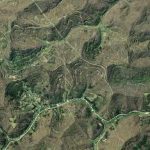You might, someday, be able to own some of the oil and gas minerals under you!
Contents
- Introduction
- How surface owners can end up owning an interest in the minerals under their land — and even get royalties!
- The existing statute.
- House Bill 4268: The 2018 Cotenancy Statute and the Unknown and unlocatable Interest Owner’s Act.
- Conclusion.
Under the new 2018 Cotenancy statute, and even under an older statute that oil and gas well drillers sometimes use, surface owners could end up owning an interest in the oil and gas minerals under their surface tract!
Many times the ownership of a single mineral tract has fallen into heirship for so many generations that dozens of people own a very small share of the one tract. There are so many heirs that some of the heirs are now unlocatable or even unknown. Under two different statutes, if the rightful oil and gas owner heir does not come forward for seven years, then the owner of the surface tract or tracts above the mineral tract can take action so they end up owning the unlocatable or unknown owner’s interest in the minerals under their land! Under both statutes the surface owner can start getting future royalties, and under one statute, maybe even get the signing bonus and accumulated royalties.
So if you are a surface owner, and if someone suddenly or out of the blue wants to buy your land, check into it first! That potential buyer may want to buy your land cheap because they know something you do not. They may know that the surface owner of your tract could end up owning a profitable interest in the underlying minerals. Before you sell, if there is horizontal drilling in your area, find out if they are drilling a horizontal under or close to under you, and if so find out more about what is going on. Maybe you should not sell, or maybe you should get a lot more if you do!
Read more information about this below. For more explanation and maybe other ways to get ownership of the minerals under your land go here.
WVSORO also recommends that owners of full or partial interests in the oil and gas mineral rights think hard before selling. And if they do sell, they should get what the minerals are worth to the buyer, not what they used to be worth to the current owner. If you are in that situation go to this web page.
How surface owners can end up owning an interest in the minerals under their land — and even get royalties!
Sadly, many surface landowners do not also own the oil and gas or other minerals under them. This is most critical if a driller wants to put a well pad or other surface disturbance on their land for oil and gas drilling — particularly for the very burdensome drilling of horizontal wells into the Marcellus shale or other formations. WVSORO thinks surface owners in this situation should be able to block the use of their land for horizontal drilling. If you are in that situation go to this web page. However, if your surface land is in the territory where horizontal drilling is happening, and if the driller is not trying to use your land for its well pad or other surface disturbance, you may be in luck.
A common example of how surface and minerals get separated is when Farmer Brown divided up the surface of his farm when he died and gave each of his children ownership of a piece of the surface. Often Farmer Brown did not divide up the ownership of his minerals, just the surface. That way each of his children had a shared interest in his entire mineral tract so they all would share the royalties if a well was ever drilled anywhere on his old farm. Over the years if there was no oil and gas drilling going on, his children married and had children and the shares of ownership of the minerals passed on to their children and then on in more and more, smaller and smaller shares on to their children. The last names of his heirs changed as daughters took the names of their husbands. Not every family member stayed in touch. Some of Farmer Brown’s heirs moved away, and many even out of state. After a few generations, there could be dozens and dozens of Farmer Brown’s heirs all over the country.
Now the Marcellus Shale tsunami has hit West Virginia. Drillers now are interested in drilling into Farmer Brown’s heirs’ old mineral tract. But there is a problem. Many of his heirs cannot be found. Some family member may know that Great-Aunt Betty hightailed it off to a big city in Ohio, but does not know her address. And she is probably dead by now, and it is unknown whether she married or had children. How can the driller get a lease from unlocatable or even unknown heirs?
West Virginia has had a leasing statute since 1986 that allows the driller to file a petition in Circuit Court to get a lease from the unlocatable and unknown heirs (as well as”abandoning” heirs who can be located but will not respond).
The judge of the Circuit Court appoints a “guardian ad litem” for the unknown and unlocatable heirs of Farmer Brown and that person makes sure an adequate search for them has been done. If so, after six months, that guardian ad litem negotiates and signs a lease on the behalf of the unlocatable or unknown owners “with terms and conditions customary in the area”. The judge can also order extra searches for the mineral owner.
The delay rental (now sometimes called a paid up “signing bonus) and royalties that would go to these owners if they were known or locatable are held by the General Receiver of the Circuit Court for the county where the land was located. (The statute refers to the General Receiver as a “special receiver”, but a study of this statute and the use of those terms elsewhere will conclude that it is the statutorily created office “General Receiver” who gets and holds the money.) If the missing or unknown mineral owner shows up and proves to the judge who they are, they get the money.
However, if the unknown or unlocatable mineral owner does not come forward for seven years, then the General Receiver reports to the Circuit Court Judge that no mineral owner has come forward. The judge enters an order to give notice to those who “appear to be surface owners” of their right to appear and show proof that they are surface owners. If they do come forward and prove who they are, the judge causes a deed to be made signing over to the surface owner(s) the oil and gas and other mineral interests. If the mineral tract in question underlies more than one surface tract, each surface owner gets a share corresponding to the boundary lines. If a single surface tract is owned by more than one person, each owner that can be found or comes forward receives their relative share. The General Receiver is also ordered to give any signing bonus and royalty money held (minus expenses of the General Receiver) to the surface owner(s). This can be a substantial sum for horizontal shale gas wells. All future royalties also start going to surface owner(s), though these wells produce a lot less after seven years than they did at the start.
This existing 1986 leasing statute is one way that a surface owner might end up owning an interest in the oil/gas minerals under the surface property. And in the case of this statute, the surface owner gets the accumulated signing bonus and royalties too. And many of these petitions under the existing 1986 leasing statue were started seven years ago, so there could be money sitting in the Special Receiver’s accounts right now! So be careful before selling your surface if you are in an area where horizontal drilling to the Marcellus Shale or other formations is under way.
A second statute pass in 2018 also will, in the future, give the surface owner(s) a chance to own a share of the mineral tract underlying their property.
House Bill 4268: The 2018 Cotenancy Statute and the Unknown and unlocatable Interest Owner’s Act.
Before the passage of the 2018 Cotenancy Statute, if a driller wanted to drill into a mineral tract (or even, we say, just frac’ into a mineral tract) the driller had to get the signature of each and every owner of a shared interest in that tract to sign a lease. So if there were 100 owners of an interest in a single tract, and only one (one who could be found), sometimes called a “holdout,” did not sign a lease, the driller could not drill.
The West Virginia Legislature thought this was unfair to the other 99 who wanted to have their land developed and receive royalties.
To deal with this problem, the Legislature passed the 2018 Cotenancy statute as part of House Bill 4268. The 2018 Cotenancy statute provided that if there were more than seven heirs (technically “cotenants” or “coparceners”), and if the driller could get the owners of 75% of the interest in a tract of land to sign leases, then the driller could go ahead and drill. The driller would have to pay unsigned mineral owners the highest royalty and average signing bonus provisions of those who did sign leases together with other beneficial provision in one of the signed leases. A more complete explanation of that legislation for mineral owners who are considering leasing is here. That legislation also had other provisions that benefit surface owners, and an explanation of the bill generally for surface owner can be found here.
In addition to the 2018 Cotenancy Statute, House Bill 4268 included a benefit for surface owners called the 2018 Unknown and Unlocatable Interest Owner’s Act. This dealt with the same problem that the existing 1986 leasing statute dealt with — unknown and unlocatable owners. So instead of using that 1986 leasing statute for unknown or unlocatable mineral interest owners, if the driller was going to use the 2018 Cotenancy statute for “holdouts,” the driller could instead use the 2018 Unknown and Unlocatable Interest Owners Act that was passed in the same House Bill 4268. The 1986 leasing statute is a lot more work for the driller. So from now on, it is probably this new statute that will be used.
The 2018 Unknown and Unlocatable Interest Owners Act operates differently than the 1986 leasing statute, but it does also give the surface owner (after seven years) the potential to receive ownership of the underlying minerals and future royalties. So, again, surface owners in areas where horizontal drilling is occurring should be careful not to sell their surface without investigating whether they might be in line to get ownership of their underlying minerals (particularly if some land company or out of area individual shows up out of the blue and wants it). The big difference between the 1986 leasing statute and the 2018 Unknown and Unlocatable Interest Owners Act is that under the 2018 Act, the signing bonus and accumulated first seven years of royalties do not go to the surface owner — instead the money goes to plug some of the thousands and thousands of orphaned wells that need plugged because the drillers have gone out of business and the State does not require enough bonding.
Here is how the 2018 Unknown and Unlocatable Interest Owners Act works. The 2018 statute requires the operator to send money due to unknown or unlocatable mineral owners to the State Treasurer’s office. The State Treasurer’s office holds the money for seven years to give unknown or unlocatable mineral owners a chance to show up and claim their share of the signing bonus and royalties held to date and into the future. The State Treasurer also has the authority to do searches for those unknown or unlocatable mineral owners. If the Treasurer does find the mineral owner, or the mineral owner DOES come forward, that the mineral owner gets the signing bonus and royalties as well as future royalties.
If the mineral owner does NOT show up two things happen. First the 2018 Act Unknown and Unlocatable Interest Owners Act provides that the Treasurer gives the money that accumulated so far to the West Virginia Department of Environmental Protection to plug orphaned wells! (For political reasons the Legislature also gave half of that money to a fund for the state Public Employees Insurance Agency. However, we hope they will find other solutions for the P.E.I.A. crisis before then, and put all of the money toward plugging orphaned wells.)
Second, if the mineral owners do NOT show up after seven years, the 2018 Unknown and Unlocatable Interest Owners Act provides that the owner of the surface tract above the mineral tract can go to court and get ownership of the unknown and unlocatable mineral owners’ interest in the mineral tract, and then get future royalties. The treasurer’s office has to put a public notice in the local county paper telling the surface owner of their right to do this.
So if you only own the surface of land, and if someone suddenly or out of the blue wants to buy your land, check into it first! That potential buyer may want to buy your land cheap because they know something you do not. They may know that the surface owner of your tract could end up owning a profitable interest in the minerals. Before you sell, if there is horizontal drilling in your area, find out if any driller is drilling a horizontal well bore under or close to under you. Horizontal well bores as this is written are usually a mile long and drain 500 or 1000 feet on their side of the well bore. But many are longer — up to three miles. If there is a well pad within that distance from your surface land, do research to find out whether there is ain fact a well bore close to you and, if you can, find out whether the driller used the 1986 leasing statute or the 2018 Act to drill into the tract under you. If so, you may be about to come into some money! So either don’t sell, or make sure you get not what the land was worth to you before the drilling started, but what it will be worth to the buyer seven years after the drilling.
Finding out if your surface may benefit from the drillers’ use of either statute is not easy. It may require a lawyer or an abstractor etc. But here is a good way to start. [Link on how to start is still under construction.]




